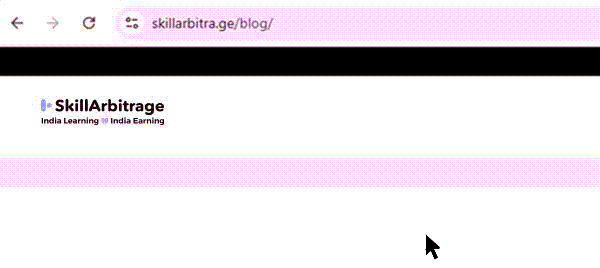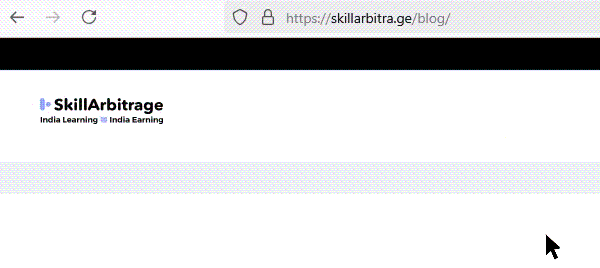This article has been written to educate business owners on cross-selling and up-selling strategies. It will also serve as a guide on how they can create it for their own business.
Table of Contents
Introduction
Imagine a customer coming inside your store to buy a laptop. They select what they want to buy and they look happy, but you know if they get an extended warranty, it will be much better for them.
Or maybe you feel that if they upgraded to a slightly higher variant, it might be much better for long-term satisfaction and they will thank you later.
So you offer them that, but instead of loving you for it, they simply nod and walk away with just the laptop they chose. This has happened to many business owners, whether online or offline.
They are not able to cross-sell or up-sell properly —because of this they not only lose some extra revenues but also lose trust among their customers as the customers think they’re very pushy and just want to make a sale.
This is why having a cross-sell and up-sell strategy suitable for your business is very necessary. It not only helps your business’s financials but also helps keep the customers happy while building long-lasting loyalty.
Now that you are open to hearing more about cross-selling and up-selling, let me tell you exactly what up-selling and cross-selling mean.
What does cross-selling & up-selling even mean?
90% of the time when a customer walks into a store, they already have a plan on what to buy. Very rarely do they enter a store and then think of what to buy. This is why most customers will simply enter the store, buy what they want, and immediately leave.
For example: There is a birthday so a guy already knows he wants to buy balloons so he will simply walk into a store, ask for balloons then buy them and leave. He won’t just randomly enter the store and then think of what to buy.
But imagine when he’s buying balloons, you ask if he also needs a birthday cap or candles And suppose he says “YES”. This one simple question will have increased the Average Order Value (AOV) and help have higher sales.
And that’s exactly what Cross-Selling means – It’s the strategy to offer related or complimentary products to your customers’ current purchase.
Now you know that when a customer is ready to buy something, they already know what they want to buy. In the modern age of the internet, they would have already researched and decided the best choice.
But the thing is that they might not be aware of a better variant or option that is better for them than what they are currently going for, as it could help meet their needs much better and perfectly.
For example: Imagine a customer walks into your store to buy a laptop. He chooses a laptop with 256 GB storage. You ask him what he will be using the laptop for, and the customer says “Photo editing”.
Now you know that for a photo editor, 256 GB storage might be less so the customer will not have a good experience if they go with this laptop. So what you do is, you tell them that they should go for a higher variant that has 512 GB storage, and the customer AGREES.
With this one single line, you helped the customer have more satisfaction with their purchase as well as made them pay more money, hence increasing your revenue.
And that’s exactly what Up-Selling means – it’s the strategy to make customers go for a higher-tier product, an upgraded version, or an additional feature that provides them better value.
Why is having a cross-selling and up-selling strategy important for every business?
What I believe is that any business, if incorporates a GOOD up-selling and cross-selling strategy, can multiply its sales exponentially. And the magic of it is that it doesn’t require any extra Customer Acquisition Cost (CAC).
Here are some reasons why having a cross-selling and up-selling strategy is important for every business:
- Cross-selling or Up-selling will help increase revenue and profits without spending anything extra to acquire new customers, hence you will have a lower CAC.
- Not only financially, but if you suggest the right products, it will also improve the overall experience of customers, hence boosting customer satisfaction and trustworthiness.
- It will also help you clear out unsold inventory and increase sales of less popular products.
- It can also help get insights on what customers usually prefer more as complimentary with a product, hence helping make better business decisions such as offering discounts on a combo.
These are just a few reasons why every business owner should incorporate cross-selling and up-selling into their business. But why should you believe me?
That’s because it’s not just me saying it but some of the big brands that you must have heard the name of, also use cross-selling and up-selling tactics openly:
- Apple: It is a cross-selling and up-selling powerhouse. From recommending additional storage options for iPhones to offering AppleCare+ at checkout, the company is an expert at increasing average order value without being pushy.
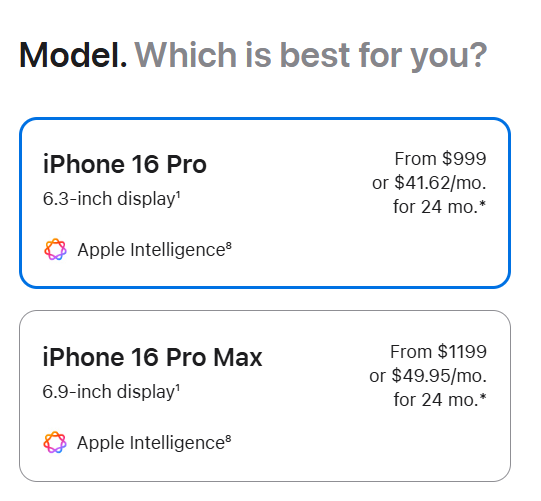
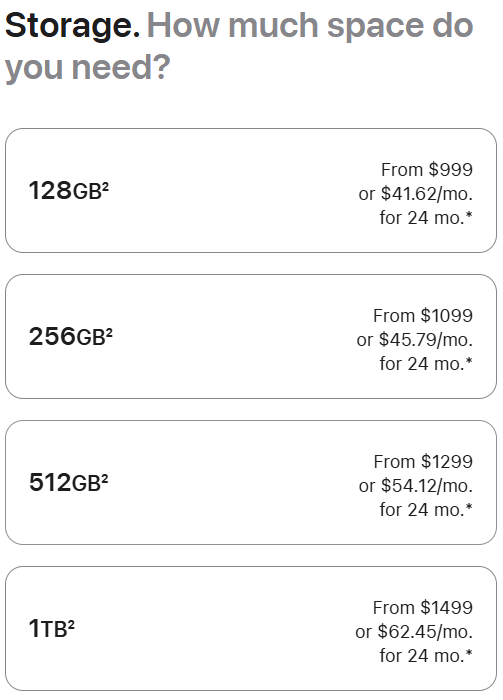
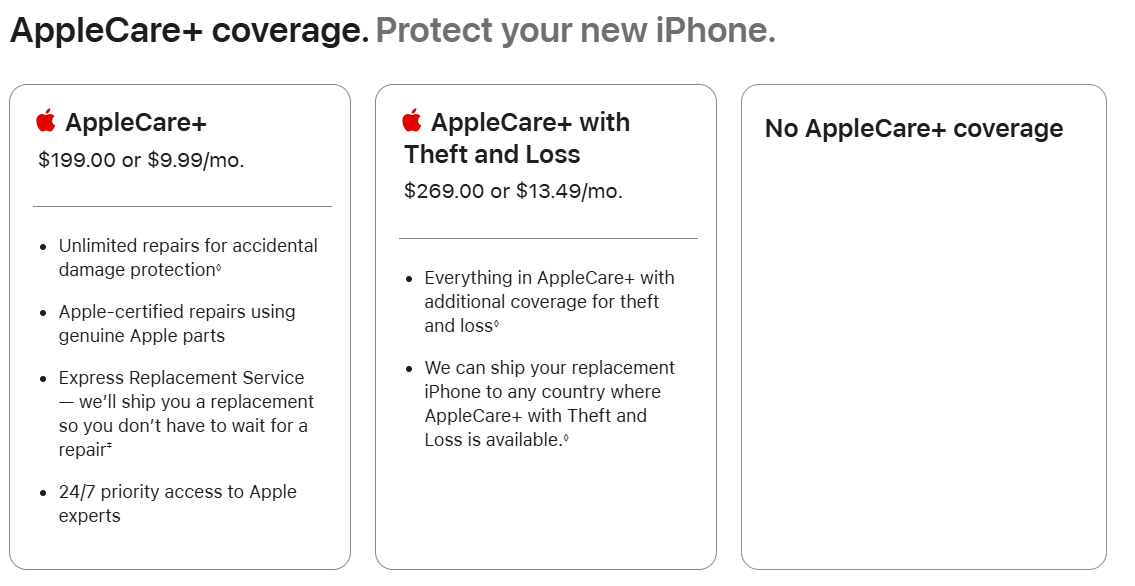
- McDonalds: Their iconic question, “Would you like fries with that?” is a perfect example of cross-selling. McDonald’s turns small complimentary suggestions into massive revenue growth.
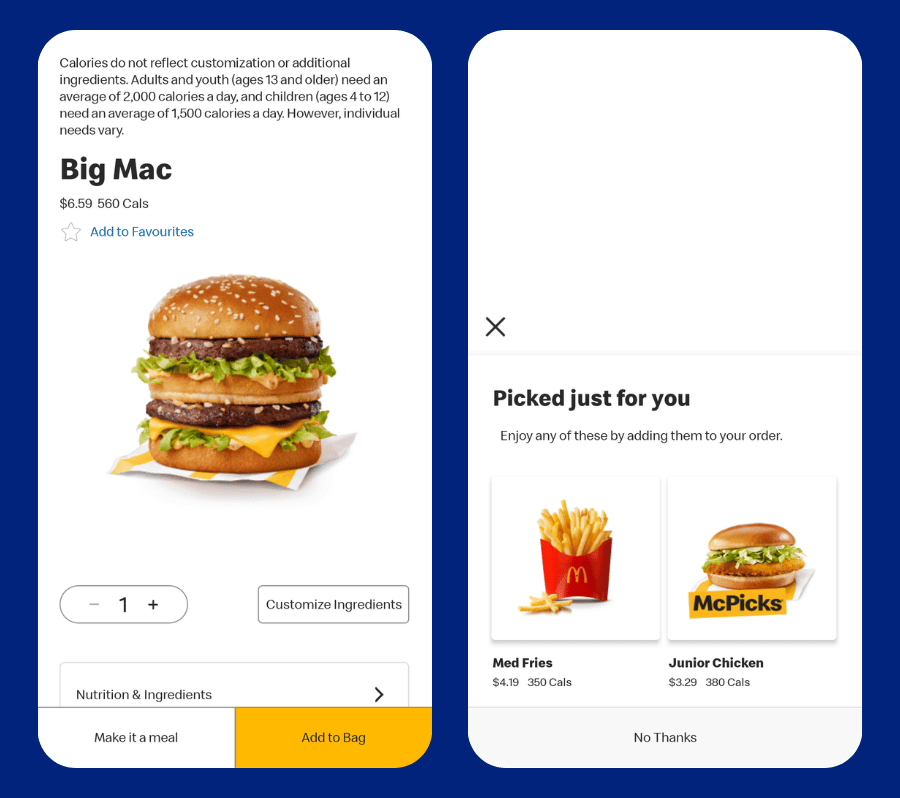
- Amazon: Amazon has an AI-based recommendation engine that analyses customer behavior and suggests relevant products on their home page or checkout page.
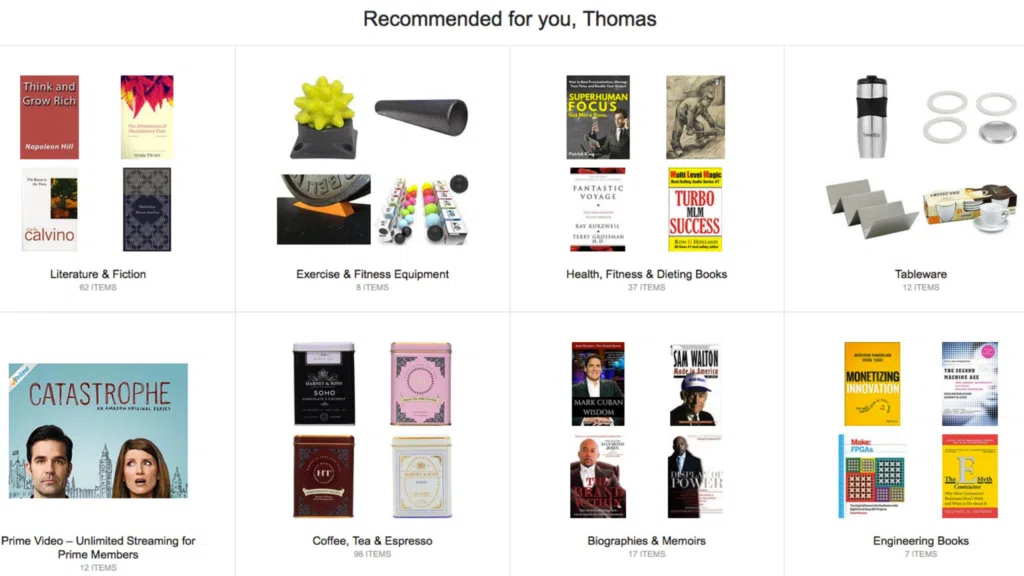
Here are some statistics on how it affects the financials of businesses all around the world on average:
- AOV increase: Companies often get a 10-30% boost in their average order values after introducing Upselling and cross-selling techniques.
- Revenue growth: Businesses worldwide have reported revenue bumps ranging from 5-20% attributed directly to improved cross-selling and Upselling.
Stressed that you will not be able to implement these perfectly? Don’t worry because I am here to show you how you can have a perfect strategy that works best for your particular business.
Building an effective cross-selling strategy
Step 1: Understand the customer
You need to start by understanding your customers because you cannot offer something generic as most people might reject it. You need to offer suggestions that are relevant and tailored to their needs.
If you recommend a mouse to a customer looking for a laptop, he will simply say “The laptop already has a trackpad so I don’t need it”. At that point, you lost extra revenues and even customer loyalty as the customer will now think that all you care about is selling more stuff.
But what if you would have suggested the mouse to a PC buyer and an external hard drive to a laptop buyer? There are more chances of success leading to extra revenues and building trust.
And that is why personalization is the first step to mastering cross-selling in your business. Using it, you can recommend the right offer to the right customer, hence increasing the chances of cross-selling to succeed. How can you do that?
- Look at your CRM (Customer Relationship Management) tool to find out the statistics of which product your customers usually pair with.
- Check out past purchases and analyze customer behavior to understand which two products people mostly pair as a combo while buying.
- If you have an online business, you can simply use AI recommendation tools that show related items directly on product pages or in cart summaries of the customer.
For Example, Amazon also uses AI recommendation tools to suggest relevant products to customers in their “Frequently Bought Together” section on the product page.
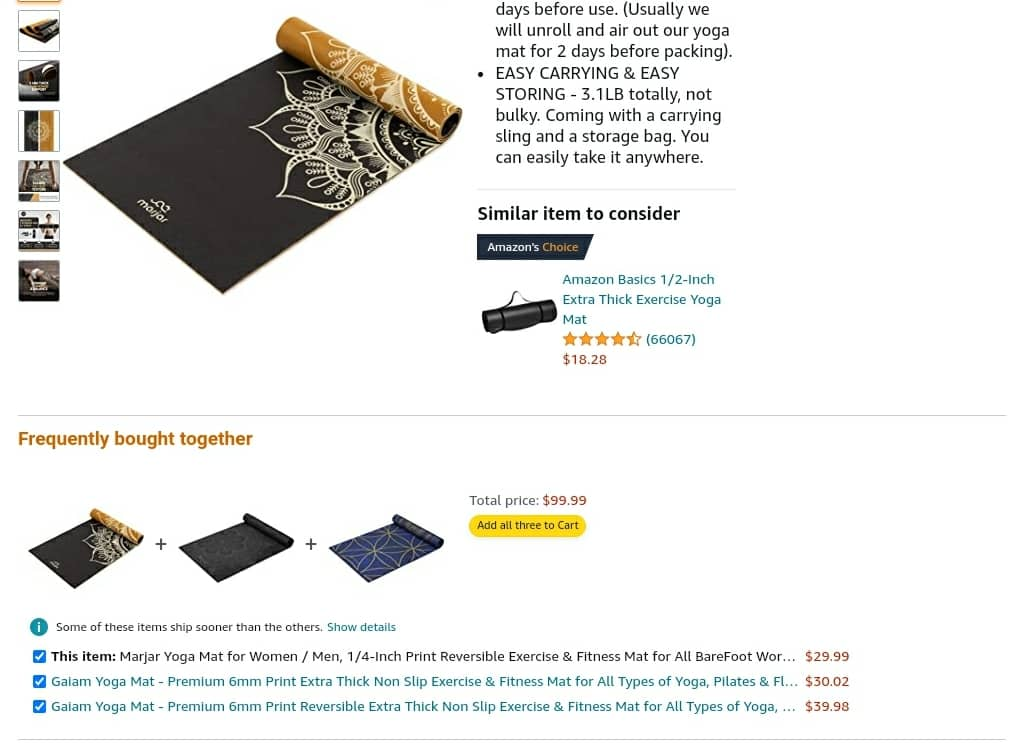
Step 2: Offer at the right time
Now you understand what your customers will most likely prefer to buy when suggested and which ones would they refuse.
But if you offer him suggestions after 2 minutes of him getting inside your store, he will simply say “Just give me the product that I ask for”.
Or if you suggest in the middle of the purchase, it might confuse them because at that time they might be trying to understand the current product they are looking for.
What if on your e-commerce website, you offer the suggestions to him on the main product page itself? Looking at so many options and variants, he will simply get confused about so many options and may even begin to doubt his first purchase decision.
So what’s the right time to offer the complimentary product to maximise the chances of selling it?
Let me tell you there are three most important moments when you can offer a complimentary product to the customer and have the highest chances of closing the sale.
- First moment
The first best moment to suggest a complimentary product to a customer is when the customer is looking at the main product that they want to buy. At that moment, don’t just suddenly offer the product as it might feel pushy. We need to try to keep it as subtle as possible.
For that, we need to simply place the complimentary product as close to the main product as possible so that customers notice it naturally and think of adding it to their cart too.
In-store: Arrange related items near the primary product. For example, In physical stores of Target, they place laptop accessories such as sleeves, external drives, and wireless mouse right next to laptops which encourages customers to notice and add them to their purchase naturally.
Online: Display related products at the bottom or side of the product page, so customers can easily see them as part of their browsing experience.
For example, Amazon’s “Frequently Bought Together” feature is also a perfect example of subtle cross-selling online, where customers viewing a laptop see complementary items like a mouse, laptop bag, or external hard drive displayed nearby.

During this, make sure the products are relevant and useful else it will just confuse and frustrate the customer.
- Second moment
The second best moment after the main product page is the checkout page. That’s because the customer might miss adding complementary products on the main page as their sole focus will be on understanding the main product.
On the checkout page, they have a complete idea of what they are buying so they will be more open to improving their experience by adding complimentary products.
In the same way, as we did earlier, instead of directly pushing the product, we need to do it subtly.
Online: Use subtle prompts like “You might also like” or “Add this to your order” on the checkout page. For example, at checkout, online stores suggest complementary items such as a shoe cleaning kit or extra insoles through prompts like “Add this to your order.”
Offline: Position small, relevant add-ons near the billing counter, so customers can notice and pick them up themselves.
For example, In physical stores, small displays of related items, such as cleaning kits for shoes, are often placed near the billing counter to catch the customer’s attention and encourage last-minute purchases.
- Third moment
A customer relationship with a business doesn’t end after they have purchased the product. Instead, it is the beginning of long-term loyalty and repeat sales if done rightly.
That’s why the third best moment to suggest complimentary products is after the customer purchases their main product and experiences its benefits.
After 24-48 hours of them using their main product, they are more open to looking at complimentary products that can help improve their experience even more.
Online: Send emails or push notifications with personalized suggestions. For example, after buying running shoes, Nike sends personalized emails recommending socks, fitness trackers, or training programs to enhance the customer’s experience.
Offline: Use loyalty programs, SMS campaigns, or even a quick call to recommend complementary items or offer exclusive deals. For example, IKEA uses SMS or email campaigns to offer discounts on complementary items, such as chair sets, after a customer purchases a dining table.
Follow up with the customer as soon as possible after the customer starts to use the product as it will make the recommendation timely and relevant, hence increasing the chances of another sale.
Step 3: Creating bundles
Using the two steps given above, you can also prepare the ground for your cross-selling strategy, but some customers don’t want to spend “extra money” for added convenience.
Here also being subtle is the key. So what should you do and how do you do it?
- Analyze past purchase data and find out which products are most purchased together.
- Look at the data from the previous two steps and make a list of products the customers agreed to buy faster.
- Bundle them up and offer an extra discount if they go for the bundle instead of individual products.
This will help you to motivate even money-conscious people to purchase something extra and spend more as they will be getting a discount if they go with the complimentary product at the moment.
McDonalds uses the same tactic while designing their menu. They had noticed that most customers also buy fries when they buy chicken nuggets so they simply created a bundle of them both with a discounted price than if it gets purchased individually.
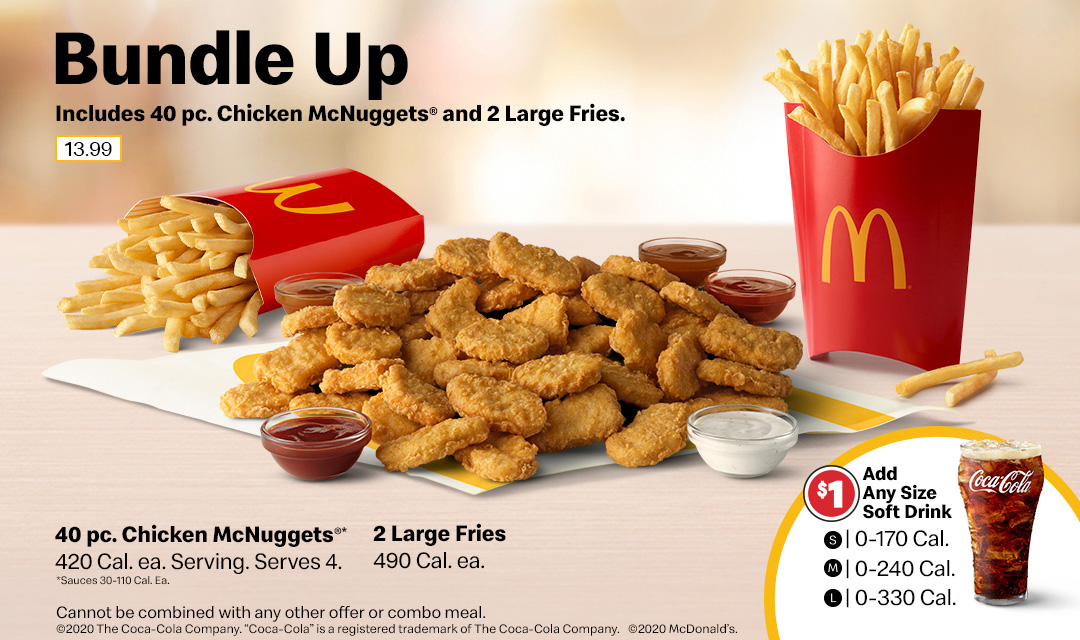
Building an effective up-selling strategy
Step 1: Focus on benefits more than features
In cross-selling, our goal was to sell a complimentary product that will enhance the customer’s experience, but up-selling is considered harder because here the goal is to convince the customer to go for a higher-priced variant of the same product.
Up-selling is not as easy as “Buy this because it has that, that too and that as well”. This will simply make the customer feel “I don’t care if it has that. My needs will be met with just this”.
This is why in the game of up-selling, you need to show the benefits of the product instead of the features. What do I mean by showing benefits instead of features?
Features will show the customer what the product does but benefits will show the customer how that feature will benefit them and why the customer should care about that feature.
Let me explain this concept to you with a small example. Suppose a customer is shopping for a smartphone. Do you think he cares if the screen resolution is 1440ppi or 1250ppi if there’s no noticeable difference in both during real use?
The customer simply cares if he will be getting sharp vivid images or not. This is the difference between features and benefits. A feature is just “1440ppi resolution” but a benefit will say “1440ppi resolution so that you get a clear viewing experience”.
Now you might have an idea of why you need to list down the benefits that they will derive instead of listing down the exact features. This is not limited to just a smartphone but applies to any product or offer. So here’s how you can show the benefit of any feature while selling:
- Understand how a feature will help the customer
Take a piece of paper and write down the features of the product that you will offer as an upsell and then write how that feature will help the customer.
- 50GB storage – You’ll never run out of space for your important files.
- Premium leather material – Enjoy long-lasting durability and a sophisticated look.
- Includes analytics dashboard – Get clear insights to make smarter business decisions quickly.
- Tie the benefit to needs
Convey those benefits in a way that is relevant for the customer and tie it to the customer’s specific needs.
Ask them questions to understand why they are purchasing then offer the product in a way so that they feel it will solve their very specific problem perfectly.
- Instead of: “This blender has a 1200-watt motor,”
Say: “Blend even the toughest ingredients into smooth, creamy results with ease.”
- Instead of: “This power drill has three speed settings,”
Say: “Tackle everything from delicate furniture assembly to heavy-duty tasks with adjustable speed options.”
Step 2: The decoy effect
Another simple tactic that I see many big businesses use for up-selling is the decoy effect. It is a simple strategy where you set the prices in a way so that the customers themselves feel the higher-priced item is the better logical deal.
But what is this decoy effect? Let’s take an example of a juice shop where most customers purchase only the small-sized glass. That’s a pain for you because you want them to purchase the larger size as it will increase your revenue
In this case, you can use the decoy effect to price all 3 sizes in a way that the customer always chooses the one that you want them to choose. Let me show you how it works:
- Basic: Cheapest but limited features (least attractive).
- Premium: Balanced value for a moderate price (ideal choice).
- Elite: High price with minimal extra features (makes Premium look better).
For example with respect to a juice shop:
- Basic: $5 for an orange juice (100 ml)
- Premium: $8 for a full glass of orange juice with honey extracts (300 ml)
- Elite: $15 for an orange juice with extra sugar, honey extracts, and decorative garnish (350 ml)
Ask yourself which option you would choose.
You won’t go with the Basic option as you can have triple the quantity for just an extra $2 as well as you won’t go with the Elite option as you will feel as if you got ripped off. The best logical choice? Premium option which is the middle one.
This is how you can set your pricing using The Decoy Effect to make sure that the customer goes with what you want them to go with (every single time). Here is an example of Netflix using the decoy effect:
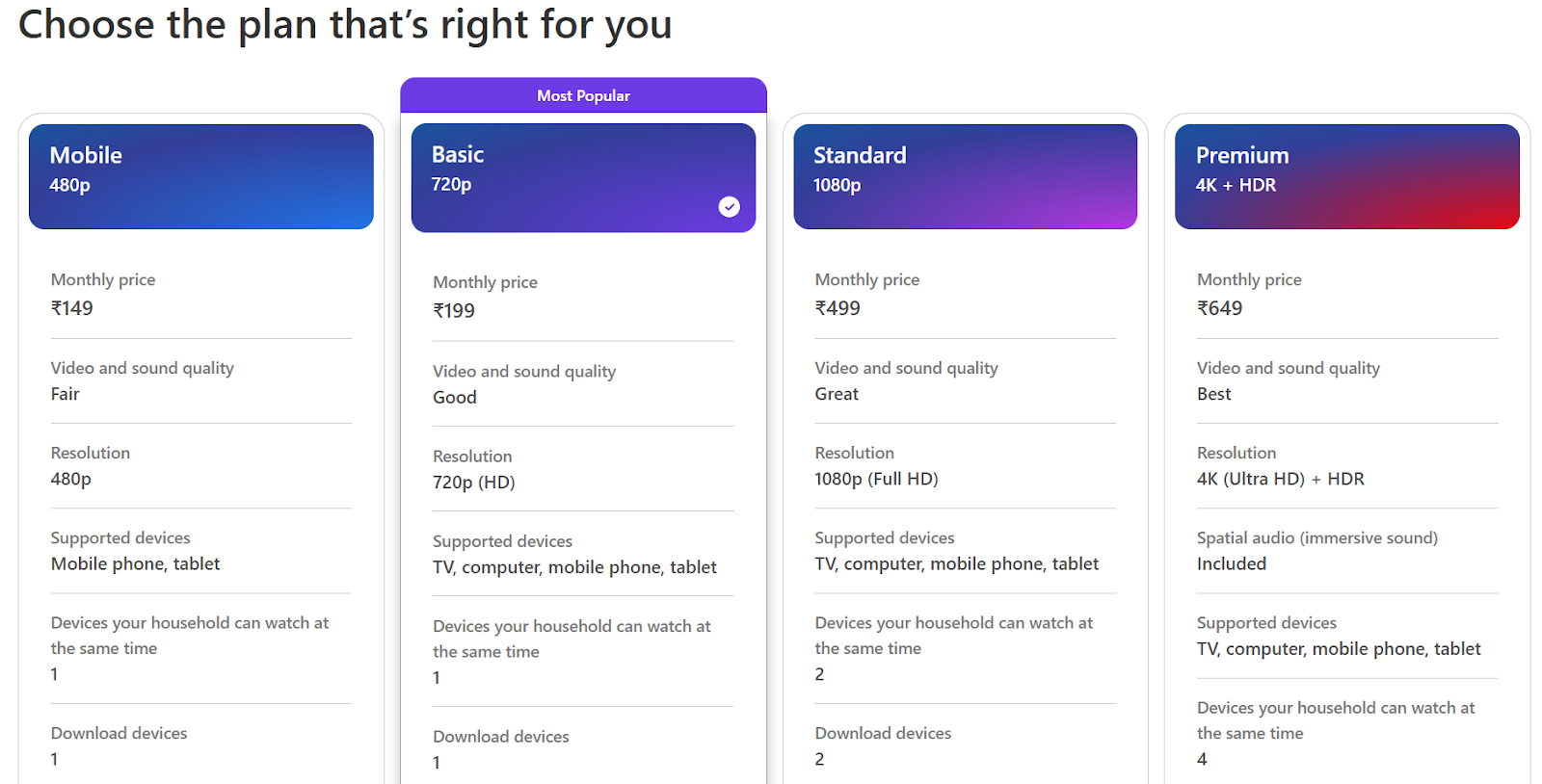
Step 3: Evoking urgency
Pressuring customers will never be a good approach to Upselling. However, pressurizing is very important as otherwise, the customer could just think he will buy it later. You need to make the customer buy instantly instead of thinking that way.
But pressurizing the customer could also make you lose sales. What’s the solution? Make them feel they should buy it instantly, all by themselves. Here’s how you can achieve that:
- The discount method
Offer customers a slight discount if they go for an upgraded version, and that too, only if they buy instantly otherwise, again they will feel they could buy it later. We need to make them feel they’ll lose the opportunity if they don’t make the decision at the moment.
For example:
- SaaS Businesses could say – Upgrade to our annual Premium plan today and save $100 compared to the monthly plan. This offer is only available until midnight!
Real-world example – Adobe offers students and teachers the Creative Cloud annual plan for $19.99/month in the first year, instead of the usual $29.99/month, making it cheaper if they sign up right away.
- Retail/E Commerce businesses could say – Upgrade to our deluxe cookware set today for $50 off and enjoy a lifetime of cooking with durable, professional-grade tools.
Real-world example – Le Creuset offers its 4.5-quart Round Dutch Oven for $246, down from the regular price of $390, during a limited-time sale, making it a great deal for customers who upgrade immediately.
- The long-term method
You can try explaining them how much savings they’ll get if they purchase the long-term plan instead of the short-term plan.
For example:
- Physical Product businesses could say – Invest in our premium water purifier and save up to $200 a year on bottled water. Buy now and get a $20 discount this weekend!
Real-world example – Amazon Prime offers a monthly subscription for Rs 299 or an annual plan for $1499, saving subscribers about $2081 per year with the annual option.
- Subscription Businesses could say – Switch to our annual billing cycle today, and you’ll save $120 over the year compared to the monthly plan. Plus, get 10% off your first year when you upgrade by Friday!
Real-world example – Spotify offers its Premium plan at $99/year compared to $10.99/month, saving users around $20 annually. Additionally, during special promotions, they offer a 10% discount on the annual plan for new subscribers, encouraging an immediate upgrade.
- The clarity method
Give clarity to the customers by showing the exact amount that they will save if they take the action instantly. Make the benefits as clear and quantifiable as possible.
For Example, Dropbox offers its annual plan for $119.88/year compared to $11.99/month, saving you $24.
You can use all of the techniques taught above regarding cross-selling and up-selling but once you start using them in your business, the next problem that you might face is that the customer saying “It worked when my business was small, but now I cannot give personalized recommendations to each customer as my business has gone bigger”.
How to have AI-powered recommendations
Do you think Amazon or Flipkart face this problem? They always suggest the exact same product that you even take a thought of.
Do you think Netflix faces this problem? They always suggest the exact same movies that you’ll like on their homepage.
How do they know you so well? Actually, they use an AI-powered recommendation engine that analyses your behaviour and then makes suggestions that will be relevant specifically for you.
These tools can be used by even small businesses and you don’t need billions of dollars to use them. They will themselves analyse below data points to come to the conclusion on which product the customer is most likely to go for:
- Browsing history: The tool will track other products that the customer viewed or interacted with before
- Purchase behavior: The tool will look at their past purchases to predict if a complimentary product will suit them best or an upgrade
- Demographics: It will tailor recommendations through their age, location, and interests.
- Engagement patterns: It will observe how the customer interacts with promotional emails and website content to understand how badly they want to buy.
The algorithms of AI tools will create patterns using those data to suggest the product that has the most probability of being purchased by the customer.
It even eliminates the need to worry about changing customer patterns because it keeps updating its database in real-time as the customer interacts on your website.
Now the most important question. Which are the tools that will help me integrate AI recommendations?
Here are four tools using which you can provide personalized recommendations automatically to your customers:
Until now, you’d have prepared your up-selling and cross-selling strategy but the last and final problem that you might face will be how to know if it’s working for you or not.
“Okay, it works for everyone. Okay, I prepared my own strategy. Okay, I have started doing cross-selling and up-selling. But how will I know how much extra revenue I’ll make by starting to do this?”
Measuring the success of your cross-selling and up-selling strategy
How will you know if your cross-selling and up-selling strategy is working or not? Well it’s very important to measure your success because without measuring, you will never know where to improve or how much extra revenue you’re getting.
So to measure your success in cross-selling and up-selling, there are few data points that you need to track and keep an eye on regularly:
- Conversion rate
Conversion rate shows the percentage of people who accepted your up-sell or cross-sell offer and completed the purchase out of all those whom you offered.
If your conversion rate is high and keeps rising, it shows that your up-selling and cross-selling strategy is working while if it’s down, then that means it needs improvements.
Now you will ask me how you could fix a lower conversion rate and how would you know which variation in tone works better? That’s easy and could be done by taking the advantage of A/B testing.
- Average order value
Average order value (AOV) is the average amount that an individual customer spends on your product/service per order. In simple words, it is average revenue per customer. The simple formula to calculate AOV is Total revenue / Number of orders.
The higher your AOV is, the better it is as it shows customers are now spending more and more on products and services that you sell.
But if you have a lower AOV, then it means customers are not willing to spend more. So the easiest way to fix it is to make the recommendations better and more relevant.
- Customer feedback
The last data point that you can use is very simple, and known as Customer Feedback. This is the best way to understand directly from the customer’s perspective if your recommendations felt helpful or pushy.
You can take surveys and also conduct direct interviews to understand customer’s perspectives and take their honest feedback. If you get a lot of negative feedback, simply ask the problem they felt and consider it as a pain point you should solve.
Common mistakes to avoid while cross-selling and up-selling
- Don’t offer too many options at once else it will confuse the customer on what they should go with, and they may even change their decision to going with nothing extra.
- Make sure you train your staff on how they should handle cross-selling and up-selling or they might simply spoil the transaction by being pushy or failing to explain the product’s benefits.
- Keep your sales scripts always personalised for each customer as being generic will simply make them feel disconnected and robotic.
- Always be clear with your deadlines and countdowns as creating false urgency will strongly harm your reputation and trustworthiness.
- When a customer is worried about spending extra, try showing them comparisons and testimonials on how the added cost and added benefits will be much better for them.
Conclusion
I have given you everything that I know or you need to know to build a cross-selling and up-selling strategy for your business. Now it’s your turn to use them for your advantage and exponentially increase your revenue as well as profits.
Frequently asked questions (FAQs)
- What if the customer rejects my first upsell suggestion?
If the customer rejects your first up-sell suggestion, don’t panic and start suggesting everything else. Instead ask open-ended questions like “Is there something specific you’re looking for?” to understand their needs to suggest something very relevant.
- How do I cross-sell without sounding like I’m trying to increase the bill?
To cross-sell without sounding like you are doing it just for some extra revenue, simply offer the suggestion as a helpful advice and tell them how it will be better for them. For example: “Since you’re buying a laptop, would you like a screen protector to keep it safe?”.
- Should I cross-sell every time a customer makes a purchase?
No you shouldn’t cross-sell or up-sell every time a customer buys something from you as it could hurt the brand’s image. Instead only suggest something when you genuinely feel it’ll be helpful for them and adds value.
- How can I handle customers who are in a rush?
If a customer is in a rush, he won’t be interested in hearing long sentences on what they should add to their cart. So keep your suggestions brief and to the point. For example: “Would you like to add an extended warranty? It only takes a minute to set up.”
5. How do I cross-sell effectively in a busy retail environment?
In a busy retail environment, you cannot cross-sell personally so the best way to do it is to keep it subtle. So place complementary items near each other and use notes to communicate like showing there’s a discount on bundles. For example: place laptop bags and mouses next to the laptop display to make it easier for customers to notice.

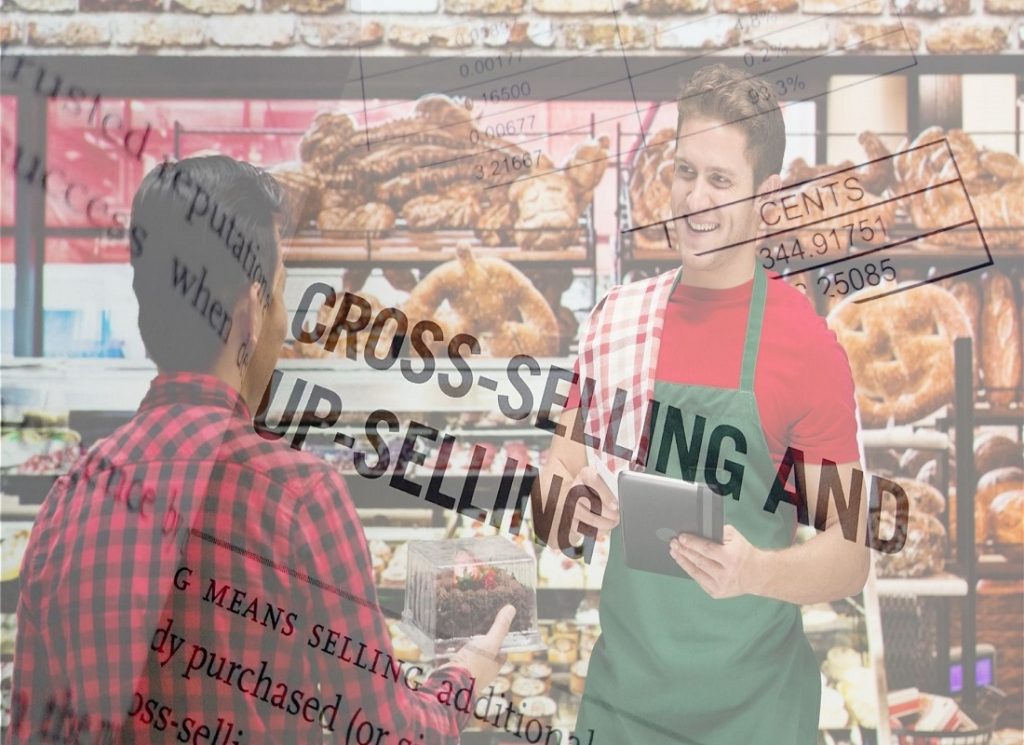





 Allow notifications
Allow notifications